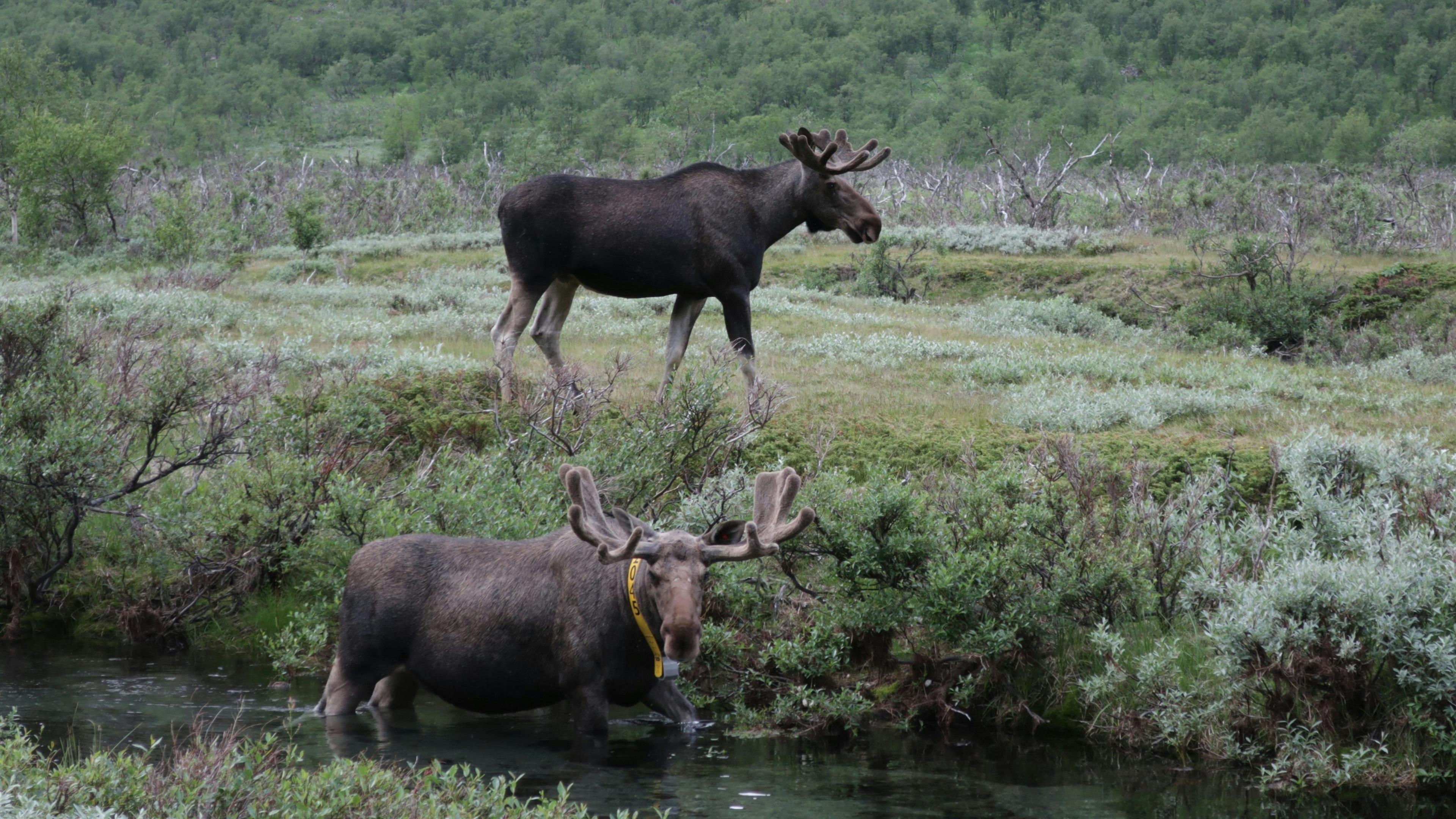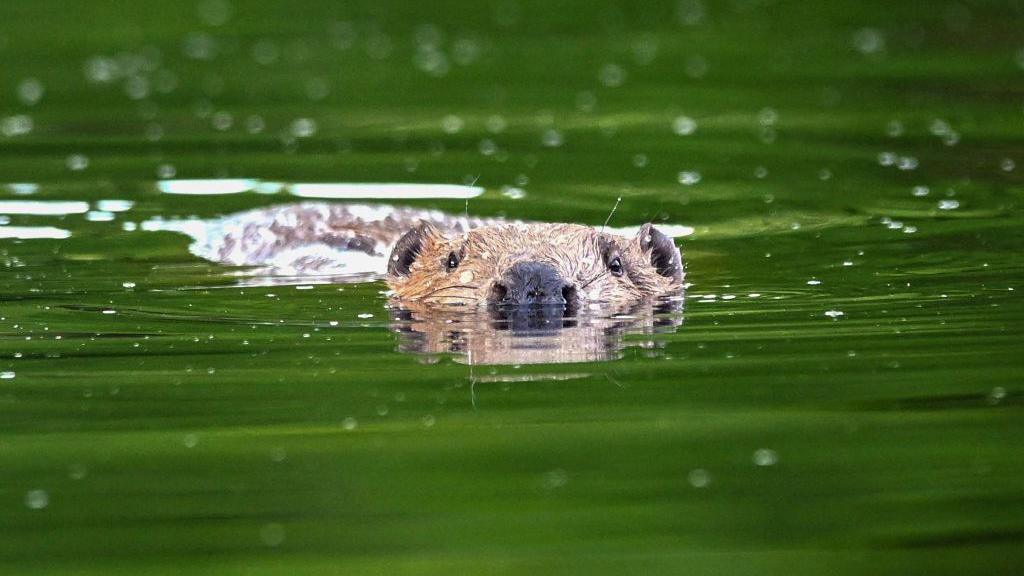Project aims to return 'keystone' elk to UK

Eurasian elk are still widespread in parts of Scandinavia and eastern Europe
- Published
Wildlife experts are "very excited" at the prospect of bringing back elk to the East Midlands - and to the UK - for the first time in about 3,000 years.
The Nottinghamshire and Derbyshire Wildlife Trusts have secured £15,000 of funding from the Rewilding Britain charity to begin feasibility studies into their return.
The animals are regarded as "keystone" species which can create and maintain habitats for diverse other species.
Janice Bradley, from Nottinghamshire Wildlife Trust (NWT), said one of the major challenges was getting the public used to the idea that elk "should be here".

Elk can play an important role in maintaining wetland habitats
European elk were originally widespread in Britain but were hunted to extinction in the Neolithic era.
Ms Bradley, head of nature recovery (north), said: "They are one of our lost species.
"They used to roam all over the place, through lots of different habitats, throughout the UK.
"They would have roamed through the wetlands of the Trent, in and out of reed beds and pools, woods and grasslands, so they are native and were lost due to hunting, probably by Neolithic people, and we think they should be brought back to fulfil their role in optimising habitats for other wildlife."

The successful reintroduction of beavers to parts of the UK could help guide the project
The new funding will pay for a disease risk assessment, to study whether reintroduced elk would bring infections to existing livestock or vice versa.
Ms Bradley thinks the successful reintroduction of beavers could be a good guide to the new project.
"We consulted with 2,000 households to say what was going on," she said.
"We would intend to do the same with elk, to inform residents and let them know what we are doing.
"But also helpfully get people excited and engaged.
"And engaging with landowners is very, very important part of any of the next steps.
"One of the first challenges is getting people used to the idea these animals are native to this country and they should be back here."

Wild moose, similar to elk, can be a significant hazard for motorists
The average Eurasian elk - along with the American moose to which it is closely related – stands between 1.4m to 2.1m (4ft 7in and 6ft 11in) high at the shoulder and can weigh from 380kg to 700 kg (838 to 1,543 lb).
Does Ms Bradley believe such animals can be brought back to the UK and allowed into the wild?
"Initially our elk and beavers would be in the same enclosure, bringing them back together in the UK for the first time in 3,000 years," she said.
"But because elk prefer to be in those big, complex wetland habitats, eventually we would be looking at elk along the Trent valley.
"They would very much stay in those habitats, they wouldn't be roaming across roads like deer, but that's a very long way away yet.
"But I'd like to see them sooner rather than later."
Get in touch
Tell us which stories we should cover in Nottingham
Follow BBC Nottingham on Facebook, external, on X, external, or on Instagram, external. Send your story ideas to eastmidsnews@bbc.co.uk, external or via WhatsApp, external on 0808 100 2210.
Swedish elk begin their annual migration
- Published16 April
Wild beaver release approved for England
- Published28 February
Delight as more baby beavers are born at beauty spot
- Published8 November 2023
New beavers born in county after reintroduction
- Published16 December 2022
Related internet links

Sign up for our Future Earth newsletter to keep up with the latest climate and environment stories with the BBC's Justin Rowlatt. Outside the UK? Sign up to our international newsletter here.